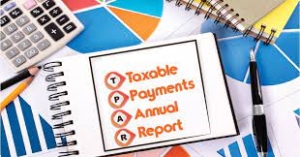In June 2020, the Australian government announced new director ID rules and established the Australian Business Registry Services (ABRS) which will be responsible for the implementation and administration of the new Director ID regime. This regime introduces the Director ID – a 15 digit unique identifier given to a director, or someone who intends to become a director. This identifier stays with the individual permanently.
Purpose of a Director Identifier Number (DIN)
The DIN is the first service to be implemented by the ABRS, which aims at creating a single source of reliable information. The aim is to help:
- Prevent the use of false or fraudulent director identities
- Make it easier for external administrators and regulators to trace directors relationships with companies over time
- Identify and eliminate director involvement in unlawful activity such as phoenix activities
Who needs a Director ID and when?
You will need a Director ID if you are an eligible officer of:
- A Company, a registered Australian body or a registered foreign company under the Corporations Act 2001.
- An Aboriginal or Torres Strait Islander corporation registered under the Corporations Act 2006.
You can apply for a Director ID now. If you plan to become a director, you can apply before being appointed. Below are some important deadlines for having your Director ID.
| Date you become a director | Date you must apply |
| On or before 31 October 2021 | By 30 November 2022 |
| Between 1 November 2021 and 4 April 2022 | Within 28 days of appointment |
| From 5 April 2022 | Before appointment |
Applying for a Director ID
The process is not difficult provided you have set up your myGovID first. In order to set up your myGovID online, you will be required to provide information such as your TFN, address and two documents to verify your identity. Alternatively you can call the ATO or complete a paper form and lodge it with certified documents.
Once you get your ID you keep it forever even if you cease to be a director. Any details that change after applying for your Director ID may be changed through the ABRS website.
If you’re currently a director of a company, or about to become a director you may as well apply for your Director ID now. There’s little point in deferring and risking a penalty down the track.
Visit the ABRS website for more information about director ID.
Related blogs:
What company debts can a directors be personally liable for?
Author: Caleb Datson
Email: [email protected]

 With a market value of more than $2 trillion US dollars it is no wonder investors, share traders and even your friends are swarming to the digital gold rush that is crypto trading. However it is important to understand the implications that holding and trading cryptocurrencies such as Bitcoin and Ethereum may have on your annual tax return.
With a market value of more than $2 trillion US dollars it is no wonder investors, share traders and even your friends are swarming to the digital gold rush that is crypto trading. However it is important to understand the implications that holding and trading cryptocurrencies such as Bitcoin and Ethereum may have on your annual tax return.

 The super guarantee system, where employers now contribute 10% of wages to super for their employees has been largely successful in providing better retirement incomes for working Australians since its 1992 introduction.
The super guarantee system, where employers now contribute 10% of wages to super for their employees has been largely successful in providing better retirement incomes for working Australians since its 1992 introduction.




